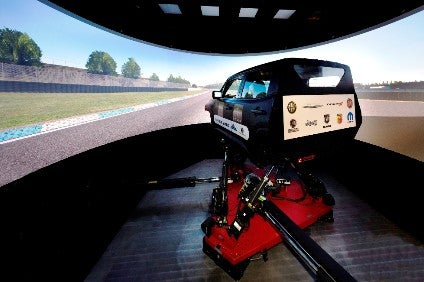
In a partnership with the state of Minas Gerais' Pontifical Catholic University (PUC), FCA has built the first Vehicular Dynamics Simulation Centre (SIMCentre) in Latin America.
It uses the most advanced global simulation technology to foster innovation and research focused on vehicles, people and road systems safety.

Discover B2B Marketing That Performs
Combine business intelligence and editorial excellence to reach engaged professionals across 36 leading media platforms.
The cost was around BRL18m/US$5.5m and it is the first FCA facility of its kind. Only Ferrari in Italy, no longer in the FCA group, has a similar facility.
The simulator consists of a platform capable of performing all motions of a real vehicle by means of nine actuators. Cockpit audio equipment mimics engine noise and tyre reaction with the road surface while a curved screen provides a 230° field of vision.
Cockpit motions are integrated with screen images and aligned with driver inputs, monitored in real time by control room instruments.
Through simulations, it is possible to define each component's technical and functional characteristics and its dynamics. These include suspension dampers, springs, tyres, steering, brakes and anti-roll bars. Once defined, specifications are created for making the physical parts that will form the vehicle.
At the SIMCentre it is possible to assess different suspension geometries in real time in a fully controlled environment without using a test track. The facility allows total driver immersion with complete realism as far as driving sensation is concerned.
Inside a Jeep Renegade, or another vehicle, the driver can be 'teleported' to any track in the world, such as FCA's Balocco facility in Italy, perhaps on a snowy day. A vast array of data is in the computers covering vehicle and driver behaviour in such an environment.
The huge differentiating point for this new facility is the driver interaction. Most simulations are done 'offline ambient', by the computers, with no real driver presence. At the SIMCentre, the applied concept is 'driver-in-the-loop' which permits a driver to assess vehicle behaviour in real time as variables are adjusted.
Using telemetry signals such as speed, acceleration, steering wheel angle, engaged gear, engine torque and power, as well as driver reaction, it is possible to perform both a comprehensive analysis of the car and the ecosystem in which it will operate.






